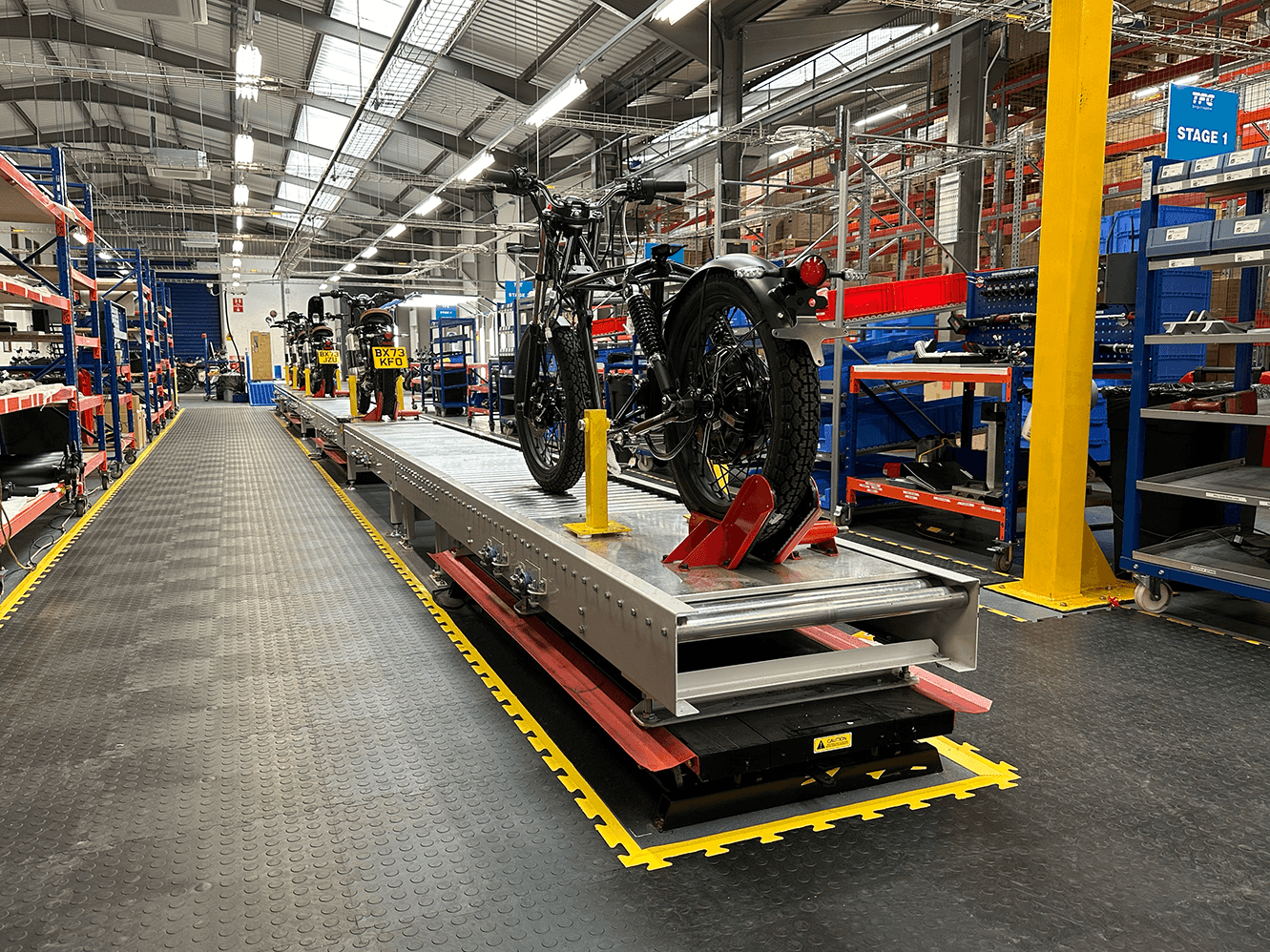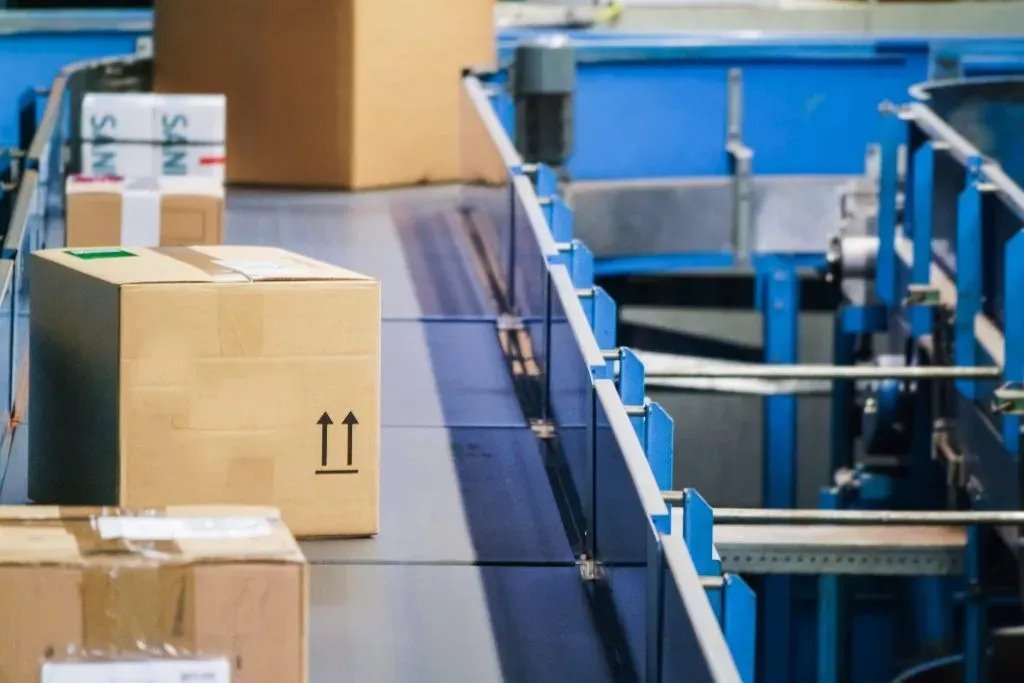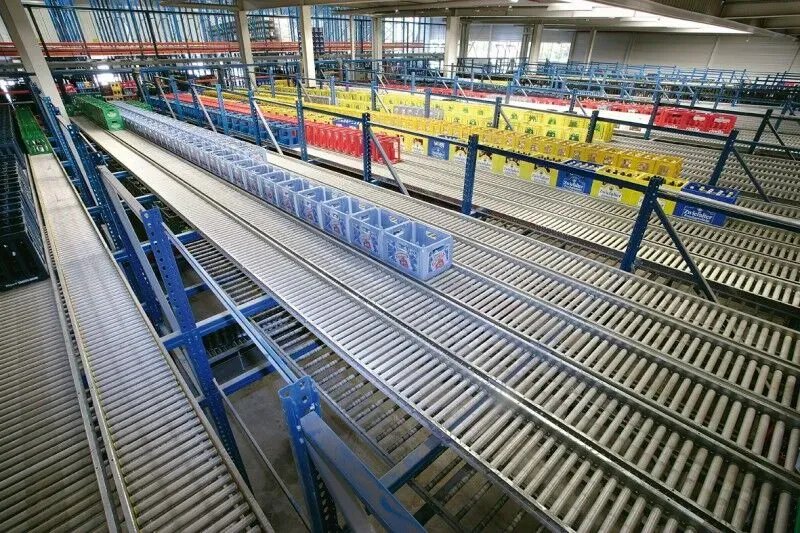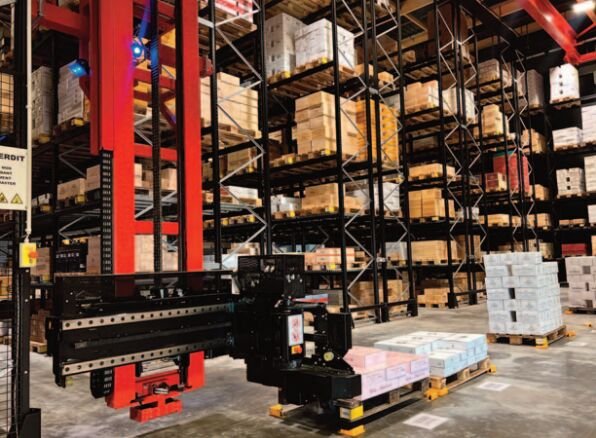Following in-depth discussions, L-A-C designed and installed a fixed length of roller conveyor which included three sections of integrated platens or slave boards – a flat sheet of aluminium – which would act as a solid base on which to fix the motorcycle frame in order to easily and safely assemble the various components required for each model.
Using an overhead hangman lift to initially place the motorcycle onto the first section of conveyor, the frame is securely fixed with its tyres held in place by red steel jigs. Additionally, the yellow steel uprights hold the frame adjacent to the foot pedals to provide further stability.
The roller conveyor sections allow for easy and smooth progression of the motorcycle frame from one assembly zone to the next with no need to lift the frame manually.
Underneath the length of gravity roller conveyor there are three lift sections with a foot switch to operate the lift. This enables the motorcycle to be lifted so the assembly personnel can work on the motorcycle frame at a raised height with no manually handling required which also eliminates the potential for physical injury. Additionally, the lift enables the frame to be turned 180 or 360 degrees, which streamlines the assembly process as personnel no longer have to walk around the full conveyor structure to work on the opposite side of the motorcycle.
At the end of the full assembly process, the motorcycle is unfastened from the holding jig and rolled off the final conveyor section via a ramp ready for internal road testing to ensure all components are fitted and working perfectly. The conveyor section with holding jig and platen is then removed from the section of roller conveyor and transported via rollers to the start of the conveyor line where it is fixed back onto the conveyor starting point for the next motorcycle frame to begin its assembly.





